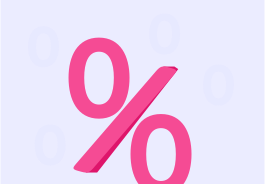YOU ARE LEARNING:
Working with Percentages: Increase and Decrease

Working with Percentages: Increase and Decrease
Percentages increase and percentage decrease are useful ways to see how much amounts change over time.
A percentage shows us a proportion of a whole (100%).
What is 100% of 12 cans of cola?

In this lesson, we will look at increasing or decreasing an amount by a percentage. We will need to understand multiplication and division of decimals.
Often, we need to increase or decrease an amount by a percentage, to see how it has changed.
Payrises and VAT are examples of percentage increase. Discounts are examples of percentage decrease.
You buy a car costing £900 and later decide to sell it at a price reduced by 5%. Let's have a go at finding the new price!
Find the percentage of the new price
The old price has been reduced by 5%. Therefore, the new price is 100−5=95% of the old price.
Apply this percentage to the price
95% of the old price is 0.95×900=855
Nice! 🤟🏼
The new price is £855
When you are peeling carrots, you notice that 5% of the mass is lost. How much is left from a bag containing 2.5kg?

Let's see what happens when we need to increase the value by a percentage.
Your bill at a restaurant is £121. You want to add a tip of 12%. What is the final total?
We need to increase the price by 12%
Therefore, the new price is 112% of the original.
What is 112% as a decimal?

Multiply £121 by 1.12 and give your answer to 2 decimal places

The final answer is £135.52
Nice! We've added on a tip.
You are at a sale and see a jumper with a label that says "Was £50 - now reduced by 15%'
How much is the jumper now?

